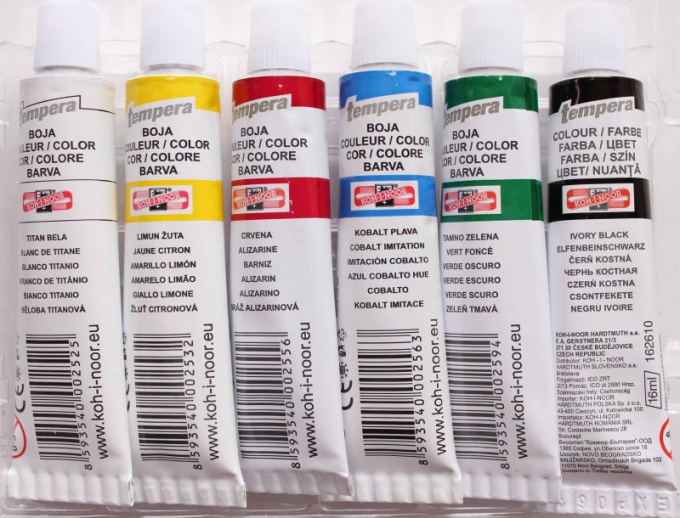What are tempera paints and their history
Tempera paint, or as it is called tempera is paint made with emulsion binder and pigment. The name comes from the Latin word "tempera", which translates as "mix".
Tempera paints were used before the advent of oil paints and had a wide distribution. For example, they were absolutely essential in iconography. Their history goes back more than 3,500 years.
The binder emulsion tempera paint consists of three elements: water, various types of glue, which varies depending on the type of tempera, and oil. To emulsifying substances include casein protein and egg yolk, gum Arabic, dextrin and soap. Adhesive when connecting to the particles of the oil creates an emulsion. In this state, the oil makes the paint flexible and not allow them to crack.
Their properties are temperature – something between the glue and oil paints. It can also be diluted with water as oil. And her work you can on paper, and on canvas. In principle they are applicable to any type of surface, but the brush is better to use soft and elastic. Form recommended flat brush or round.
The main advantages of tempera include its rate of drying, which greatly accelerates the process of creating the painting, and her amazing vitality – work, executed in tempera, retain their brightness for mnoh centuries.
Today, tempera paints are manufactured and sold in industrial packs.
The types of tempera paints
On the basis of component-based emulsion which is made for breeding, distemper, distinguish egg, casein-oil tempera and gummiarabik, which is also called adhesive. In other words, the name of the paint is obtained from the binder used for "rubbing" dry pigment.
Egg tempera was especially prevalent in the middle ages and have long been used even after the appearance of oil paints. The paint is cooked on an egg base, it dissolves easily, mixes and almost no changes its color when drying, do not not brightening and darkening. Work done with egg tempera, a very long retain the brightness and saturation of colors.
Casein-oil tempera is a water – soluble paint that consists of tiny pigments mixed with an emulsion of linseed oil and an aqueous solution of casein. This type of paint is intended to work on primed canvas, cardboard or wood. After drying, it quickly hardens and firmly adheres to the base. Today it is the most common form of tempera.
Gummiarabik, or glue tempera is based on the adhesive, e.g. PVA. She is encouraged to work not only on paper, cardboard and plywood, but on the linoleum, plaster, concrete, glass. However, the glue temperature should not be mixed with other types of paints.
